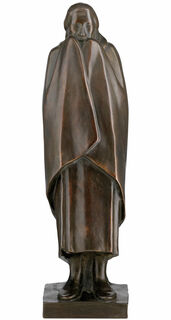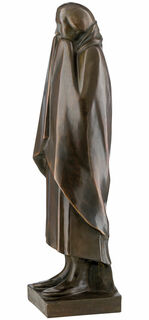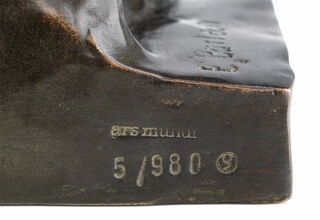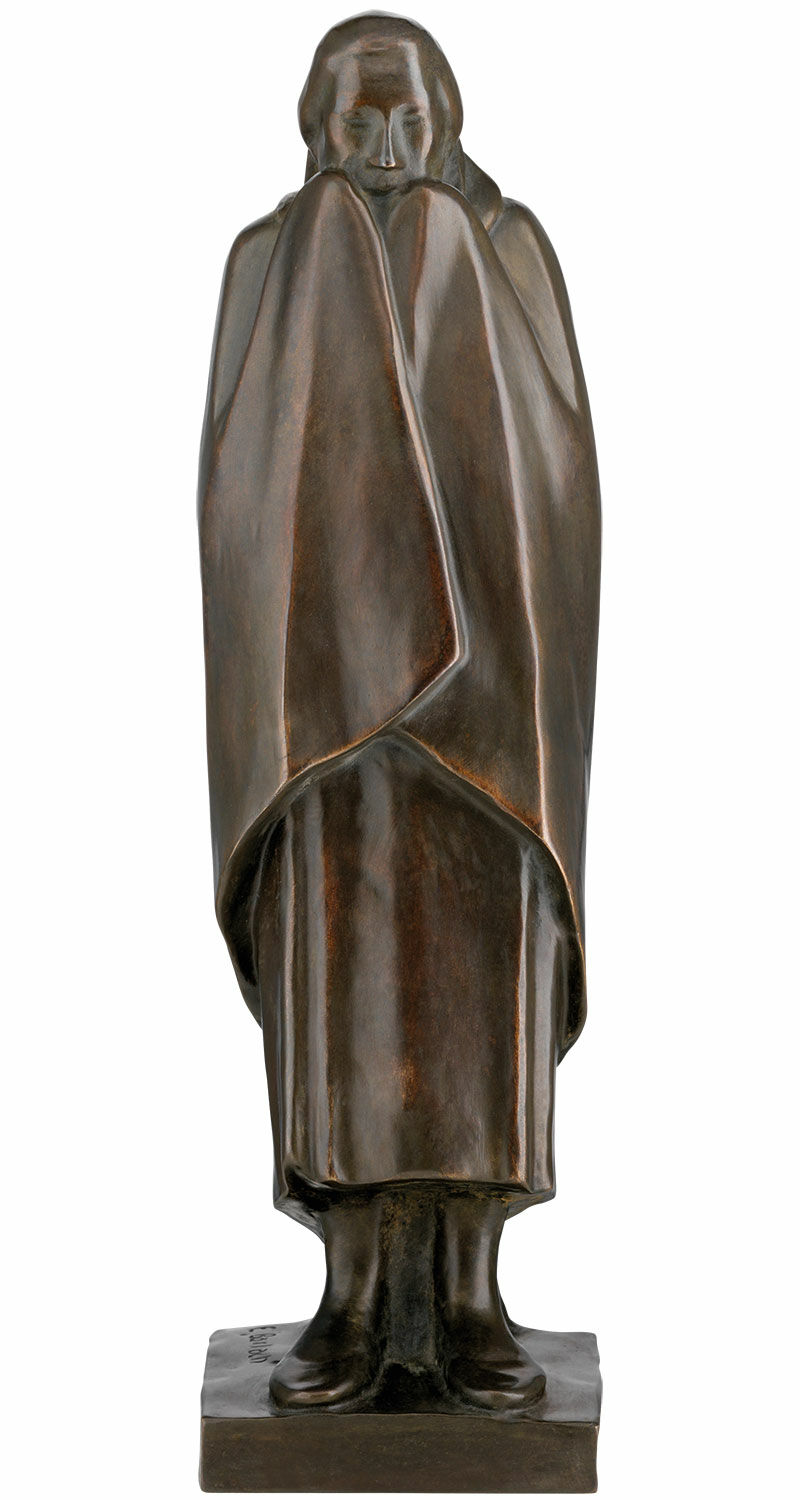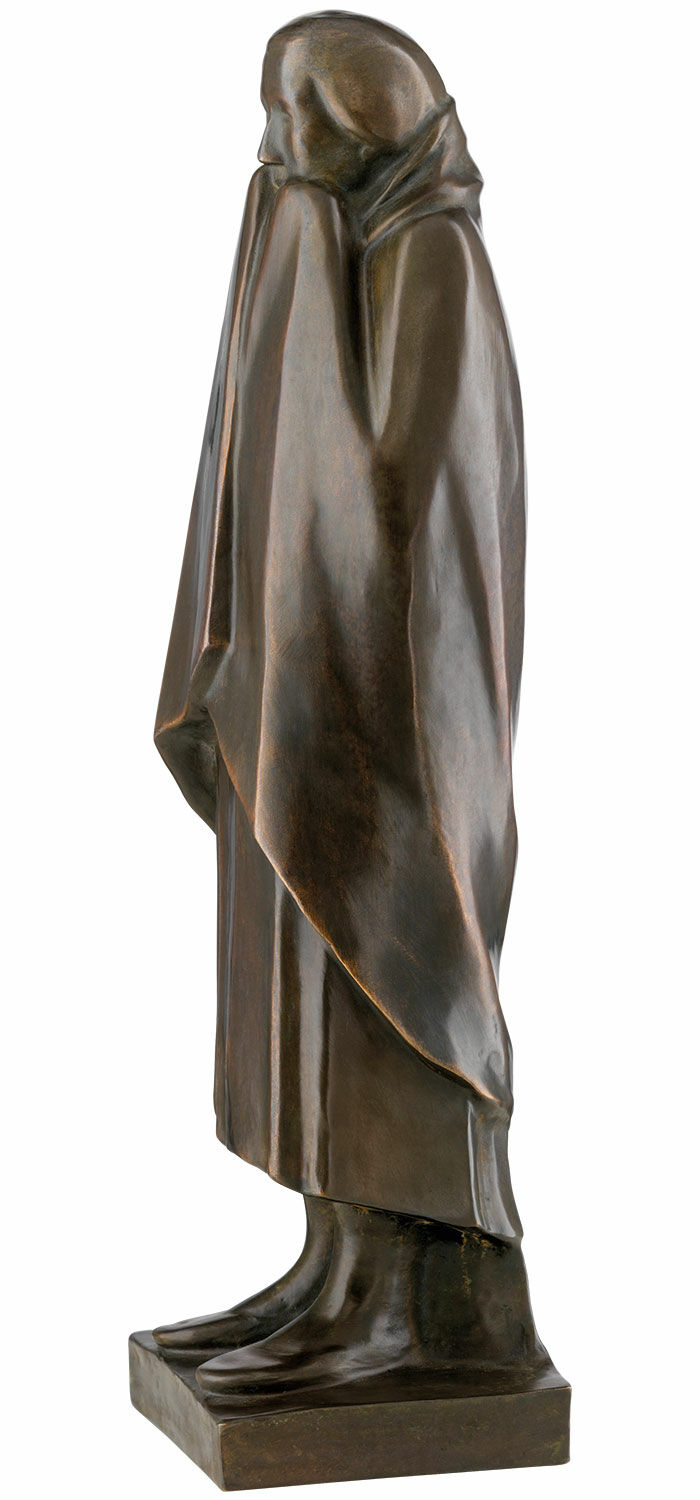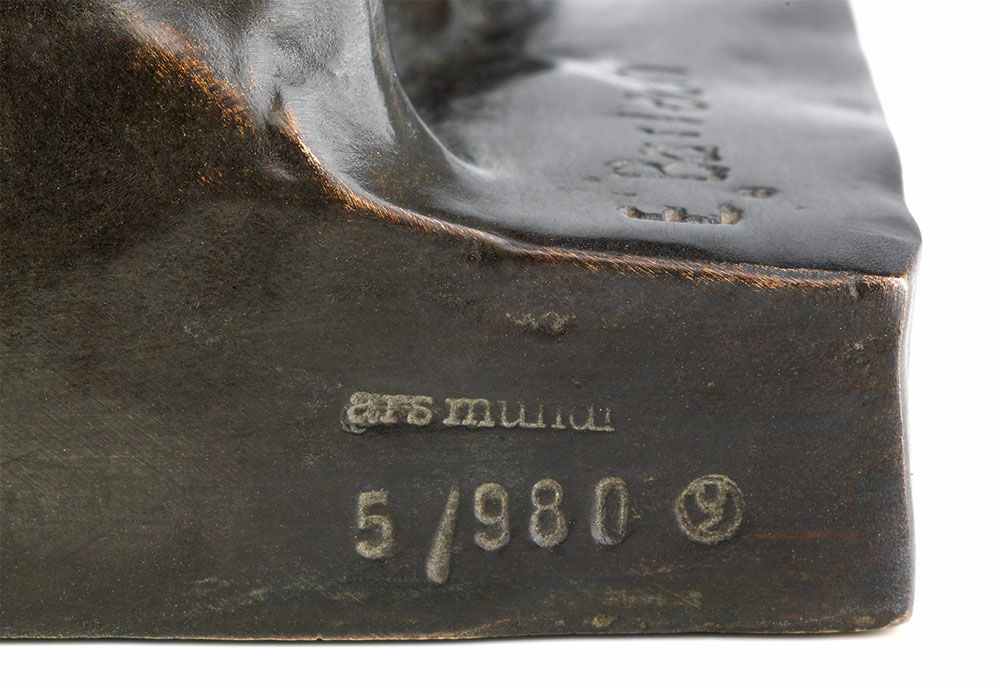Sculpture "Freezing Girl" (1916), reduction in bronze
Sculpture "Freezing Girl" (1916), reduction in bronze
Quick info
ars mundi Exclusive Edition | limited, 980 copies | numbered | signature | hallmarked | certificate | bronze | chased | polished | patinated | reduction | size approx. 32.5 x 9 x 8 cm (h/w/d) | weight approx. 3.1 kg
Video
Detailed description
Sculpture "Freezing Girl" (1916), reduction in bronze
"The sculpture by Ernst Barlach marks the beginning of a decisive change in his work, which the artist continuously refined and maintained until his death in 1938. Additionally, it is a significant historical document of the decline of the prevailing systems.
After a short service as a soldier in 1915/16, Barlach was traumatised and began to seek religious orientation. Themes of war and battle revolved and fermented in his consciousness. His expressive figures, however, became increasingly closed in appearance. All ornamentation and decoration were stripped away. The sculptural accents were limited to the essential. The partly lively lines of the garment, as seen in the 'Stroller' from 1912, served to express an inner feeling, even in the portrayal of faces and hands. The sculpture became a vehicle for consciousness, convincing power, and strength.
The 'Freezing Girl' is an outstanding example of the new compelling style. The figure grows out of the almost square plinth, motionless, like a column, in sculptural rhythms. Under the heavy fabric of the warming cloak, the hands hold the face by the cheeks, cradling it like a jewel.
The face mask shows the mouth, nose, eyes and eyebrows, but appears closed, listening inwards. It seems as if, behind closed eyes, she can hear the tremors in the machinery of human existence on Earth. This shock makes her freeze. Her heart grows cold when she thinks of the millions of people devoured and yet to be devoured by war and revolution. Against the sub-zero temperatures, you can potentially fight with heating, movement, and warm clothing if you have it. But it is difficult to find a remedy against the cold heart that freezes due to war, loneliness, and ignorance.
The girl's posture in Barlach's work reflects pause, contemplation, and introspection, and the artist is entirely with the people, with their joys but also with their pain and fear. In his artistic work, Barlach fulfils his humanitarian mission by providing strength and solace through the tangible density and presence of his creations. His entire oeuvre is characterised by clarity and encouragement. Each work offers the decisive moment of reflection and self-awareness." (Dr Friedhelm Häring, former museum director and curator)
Fine bronze sculpture, cast using the Lost-Wax-Process, chiselled, polished and patinated by hand. Moulded from the original and reduced in size (reduction). Limited edition of 980 copies, numbered and with the signature "E. Barlach" taken from the original as well as the foundry and ars mundi hallmark. With numbered certificate of authenticity and limitation. Size approx. 32.5 x 9 x 8 cm (h/w/d). Weight approx. 3.1 kg. ars mundi Exclusive Edition.
Customer reviews
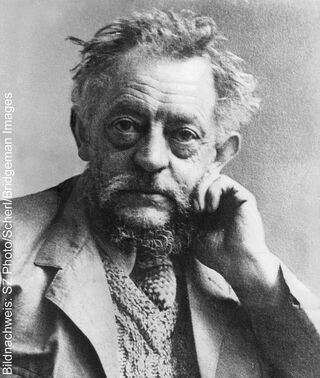
About Ernst Barlach
1870-1938, sculptor, writer and draughtsman
Ernst Barlach was born on January 2, 1870, in Wedel, Germany, and died on October 24, 1938, in Rostock, Germany. He holds an outstandingly special position within German Expressionism. As a graphic artist, draughtsman, writer and, in particular, a sculptor, Barlach created milestones in art history. Barlach's sculptural works of art have a special effect because they seek extreme experience of limits and their representation. They are works of multi-layered meaning with which he foregrounded the essence of the human being and that what stands above the self and the world.
Barlach's intention is rooted in the depths, the inner self. Shaped by war and challenging living conditions, he experiences both suffering and happiness. The human being is always the focus of his work: Ecce homo.
"I desire nothing more than to be a good and true artist as best I can. I believe that what cannot be expressed through the work can pass into the possession of another through forms. My pleasure and creative impulse continually revolve around the problems of the meaning of life and the other great mountains in the spiritual realm." (Ernst Barlach)
Ernst Barlach became an honorary member of the Academy of Fine Arts, Munich, in 1925. In 1933, he was appointed Knight of the Peace Class of the Order "Pour le mérite". In 1937, the National Socialists removed his works from public collections and spaces for being "degenerate art". Ernst Barlach died in Rostock on October 24, 1938.
Today, Ernst Barlach's works are an integral part of leading museums and collections and - if available - fetch record amounts at auction.
"The Singing Man" became Ernst Barlach's best-known sculpture, an icon of Modernism. It adorns illustrated books and posters worldwide, and the original edition is a permanent part of the collections of the world's major museums, including the Museum of Modern Art (MoMA) in New York.
An alloy of copper with other metals (especially with tin) used since ancient times.
When casting bronze, the artist usually applies the lost-wax technique which is dating back more than 5000 years. It's the best, but also the most complex method of producing sculptures.
First, the artist forms a model of his sculpture. It is embedded in a liquid silicone rubber mass. Once the material has solidified, the model is cut out. The liquid wax is poured into the negative mould. After cooling down, the wax cast is removed from the mould, provided with sprues and dipped into ceramic mass. The ceramic mass is hardened in a kiln, whereby the wax flows out (lost mould).
Now we finally have the negative form, into which the 1400° C hot molten bronze is poured. After the bronze had cooled down, the ceramic shell is broken off and the sculpture is revealed.
Now the sprues are removed, the surfaces are polished, patinated and numbered by the artist himself or, to his specifications, by a specialist. Thus, each casting becomes an original work.
For lower-quality bronze castings, the sand casting method is often used which, however, does not achieve the results of a more complex lost-wax technique in terms of surface characteristics and quality.
Graphic or sculpture edition that was initiated by ars mundi and is available only at ars mundi or at distribution partners licensed by ars mundi.
Term for an art object (sculpture, installation), which is produced in multiple copies in a limited and numbered edition according to the artist‘s will.
Artist's multiples have been called the most accessible and affordable art on the market.
A plastic work of sculptural art made of wood, stone, ivory, bronze or other metals.
While sculptures from wood, ivory or stone are made directly from the block of material, in bronze casting a working model is prepared at first. Usually, it is made of clay or other easily mouldable materials.
The prime time of sculpture after the Greek and Roman antiquity was the Renaissance. Impressionism gave a new impulse to the sculptural arts. Contemporary artists such as Jorg Immendorf, Andora, and Markus Lupertz also enriched sculptures with outstanding works.

